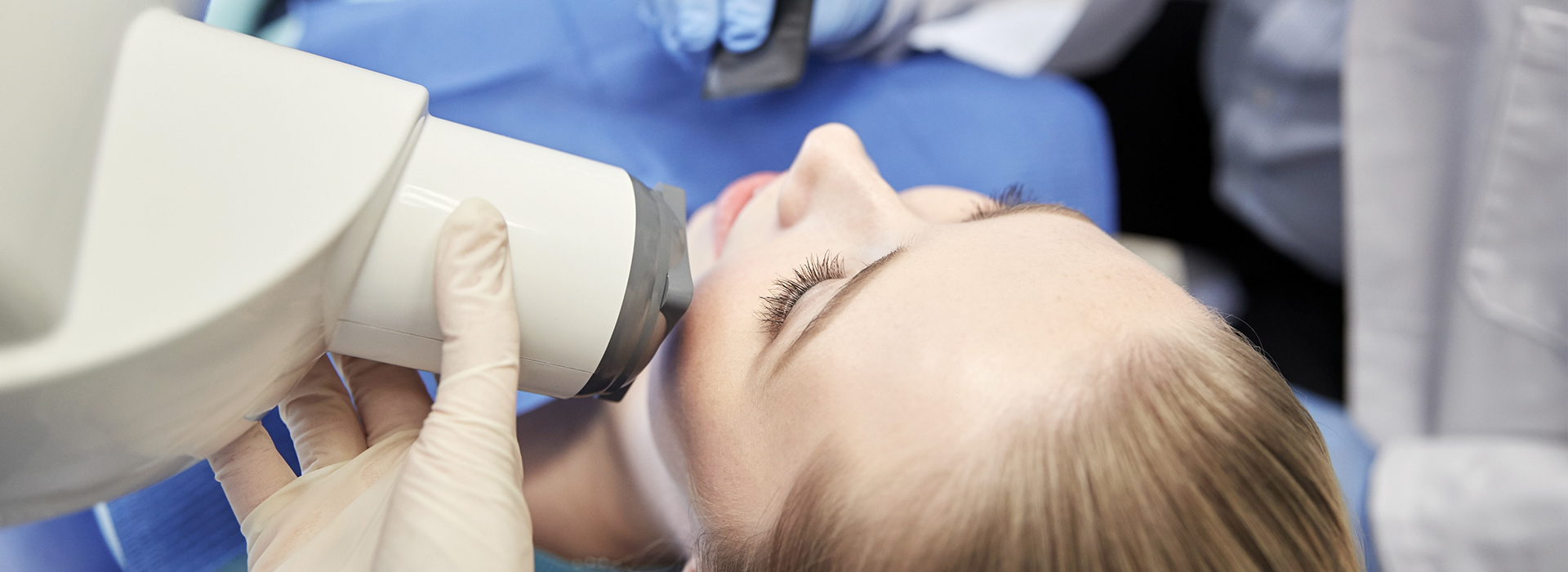New Patients
(865) 876-7050
Existing Patients
(865) 947-2220

Digital radiography replaces traditional film with electronic sensors and computer software to capture dental images. Instead of developing film in chemicals, a sensor records the X-ray interaction and converts it into a high-resolution digital file. That file can be adjusted, magnified, and analyzed on-screen, which helps dentists make clearer assessments of tooth structure, root anatomy, and bone levels without delay.
Because images appear almost instantly, appointments move more efficiently and clinicians can explain findings to patients using the actual image. The immediacy also allows for on-the-spot comparisons to previous images, speeding diagnostic decisions and treatment planning. For families and adults alike, digital radiography helps translate radiographic data into a more understandable visual conversation about oral health.
Beyond convenience, digital radiography establishes a modern baseline for ongoing care. Digital images integrate with electronic health records, are easy to archive, and simplify referrals to specialists when needed. This blend of clarity, speed, and accessibility is why many contemporary dental practices—focused on patient-centered care—rely on digital imaging as a core diagnostic tool.
Digital sensors come in several formats—small intraoral plates for bitewing and periapical shots and larger panels for panoramic views—and each is designed to capture detailed anatomical information. These sensors typically produce images with greater contrast and detail than older film methods, allowing clinicians to detect early-stage cavities, tiny fractures, and subtle bone changes that can be easy to miss on less refined images.
Software tools augment the image itself, offering controlled adjustments such as contrast enhancement, zooming, and measurement overlays. These non-destructive edits let a clinician evaluate fine details without retaking X-rays, preserving patient comfort and minimizing additional exposure. The combination of high-quality sensor output plus intelligent image manipulation supports more confident diagnoses and well-targeted treatment recommendations.
Another advantage lies in consistency: digital systems standardize image capture and storage, reducing variability between visits and providers. When images are captured with consistent technique and saved in a unified format, clinicians can track small changes over time—an essential factor when monitoring developing conditions or evaluating the long-term success of restorative work.
One of the most important practical benefits of digital radiography is the reduction in radiation dose compared with conventional film X-rays. Modern digital sensors are more sensitive to X-ray exposure, meaning they need less radiation to produce diagnostically useful images. Lower exposure levels contribute to meeting current best-practice standards for patient safety while still delivering the image quality clinicians require.
Safety also extends to workflow: fewer retakes and immediate image review reduce the overall time patients spend chairside. This efficiency is particularly helpful for children, seniors, and patients with limited tolerance for long procedures. While any X-ray use follows established safety protocols, the technological gains of digital imaging make routine diagnostics more patient-friendly without compromising clinical value.
Clinicians also benefit from dose-tracking capabilities that some digital systems provide. These tools allow providers to monitor cumulative exposure and make informed choices about imaging frequency and type. In short, digital radiography supports careful stewardship of radiation while enabling the diagnostic clarity needed to make timely care decisions.
Digital images are available immediately and can be shared securely with colleagues, specialists, or labs as part of a collaborative care approach. Instead of mailing film or waiting for development, a dentist can send a high-resolution image electronically for consultation, speeding up multidisciplinary treatment planning and reducing delays that could prolong restorative timelines.
This connectivity also benefits patients who have recently moved or seek a second opinion; digital files are simple to transfer and can be opened on most modern systems. For practices that coordinate care across multiple providers, the ability to share consistent, readable images removes a common bottleneck and keeps treatments coordinated and transparent.
Internally, digital radiography improves team workflows. Hygienists and assistants can capture and annotate images for the dentist to review, while administrative staff can manage records without handling physical film. The result is a smoother patient experience, more efficient appointments, and fewer administrative hurdles when managing radiographic records.
By eliminating film development, digital radiography removes the need for chemical processing and the associated disposal concerns. This reduction in chemical use is a straightforward environmental benefit and aligns with broader efforts to make dental offices more sustainable. Offices that adopt digital workflows often see collateral gains in reduced paper use and more compact record storage.
Digital files also support stronger data management practices. With secure backup routines and encrypted transfers, patient images can be protected against loss while remaining accessible to authorized providers. The transition from physical film to digital archives reduces the space required for storage and simplifies compliance with health record retention standards.
Long-term, a digital-first imaging strategy makes it easier to maintain a patient’s visual history. Whether reviewing the progress of periodontal therapy, tracking eruption patterns in children, or verifying the fit of restorative work, well-organized digital images provide a reliable reference that supports continuity of care across years and life stages.
In summary, digital radiography brings clearer images, faster results, and improved patient safety to modern dental care. At Kennedy Dentistry, our use of contemporary imaging technologies reflects a commitment to accurate diagnosis, efficient care coordination, and responsible record management. Contact us for more information about how digital X-rays are used in our practice and what they mean for your dental care.
